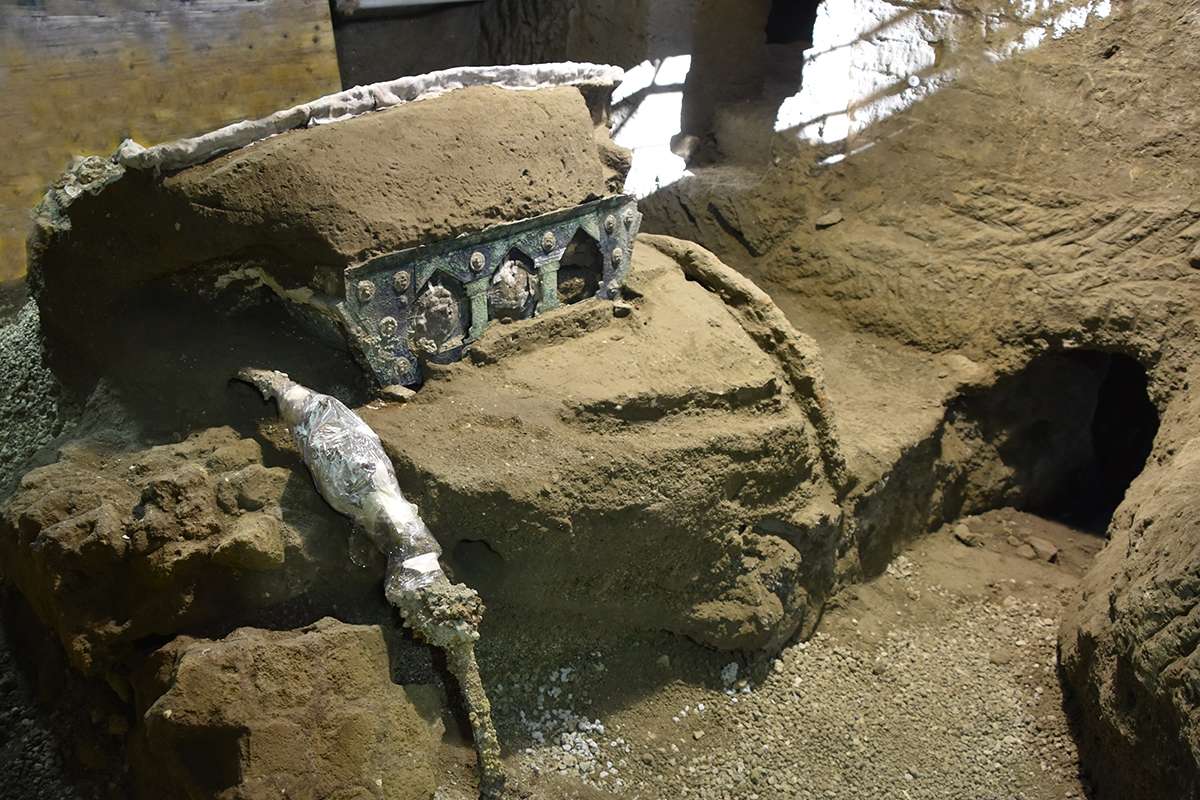Create a free profile to get unlimited access to exclusive videos, sweepstakes, and more!
'Lamborghini' of ancient chariots, adorned with erotic depictions, unearthed at Pompeii

You’ve got your average toting-around-ancient-civilization chariots, and then there’s this latest discovery from the fertile Pompeii dirt, dubbed by at least one ancient traffic expert as a ‘Lamborghini’ of the era.
According to an announcement from the Archaeological Park of Pompeii and the Public Prosecutor’s Office of Torre Annunziata, a large, nearly intact, well-preserved, four-wheeled ceremonial chariot, has been excavated recently from the suburban villa of Civita Giuliana, north of the walls of the ancient city of Pompeii. And it’s got some ancient scholars downright “astounded.”
"Many of the vehicles I'd written about before ... are your standard station wagon or vehicle for taking the kids to soccer. This is a Lamborghini. This is an outright fancy, fancy car,” UMass Amherst professor Eric Poehler, an ancient Pompeii traffic specialist, told NPR.
As you can see in the video below, the ceremonial chariot (perhaps a Piletum, per some sources) is in impressively recognizable condition, and comes correct with four iron wheels, metal armrests and backrests, and a seat for one or two (rich, likely toga-sporting) people. The cart is decorated with metal medallions adorning the facade, depicting horny satyrs, nymphs, and cupids, which some experts believe suggests that this particular chariot may have been used for marriage ceremonies (though no “just married” sign or tin cans were found trailing the cart).
“The scenes on the medallions which embellish the rear of the chariot refer to Eros (Satyrs and nymphs), while the numerous studs feature erotes,” said Massimo Osanna, the site’s outgoing director. “Considering that the ancient sources allude to the use of the Piletum by priestesses and ladies, one cannot exclude the possibility that this could have been a chariot used for rituals relating to marriage, for leading the bride to her new household."
Of course, this isn’t the first impressive find from Pompeii, which, in 79 AD was famously buried in Mt. Vesuvius’ volcanic ash, thus preserving the city and its surroundings (including the shapes of Roman bodies) in incredible detail. Heck, it’s only been a couple of months since we caught wind of archaeologists digging up an ancient fast-food stand where ancient residents once dined in McDonald’s-like fashion (and, presumably, in togas).
But while that ancient ash worked wonders for our historic records, much was permanently lost due to the eruption. Indeed, finds like this chariot are “relatively rare,” according to Poehler, “despite its ubiquity in the past."
Italian authorities believe the reason this chariot survived the eruption and the 2,000 hard years since, is because it was stored inside a portico, whose walls and ceiling collapsed around it. And somehow the looters didn’t find it first, even though tunnels had been dug out on either side.
"It is an extraordinary discovery for the advancement of our knowledge of the ancient world," said Osanna, while noting no such a chariot has never been discovered at Pompeii. “What we have is a ceremonial chariot, probably the Pilentum referred to by some sources, which was employed not for everyday use or for agricultural transport, but to accompany community festivities, parades and processions."














